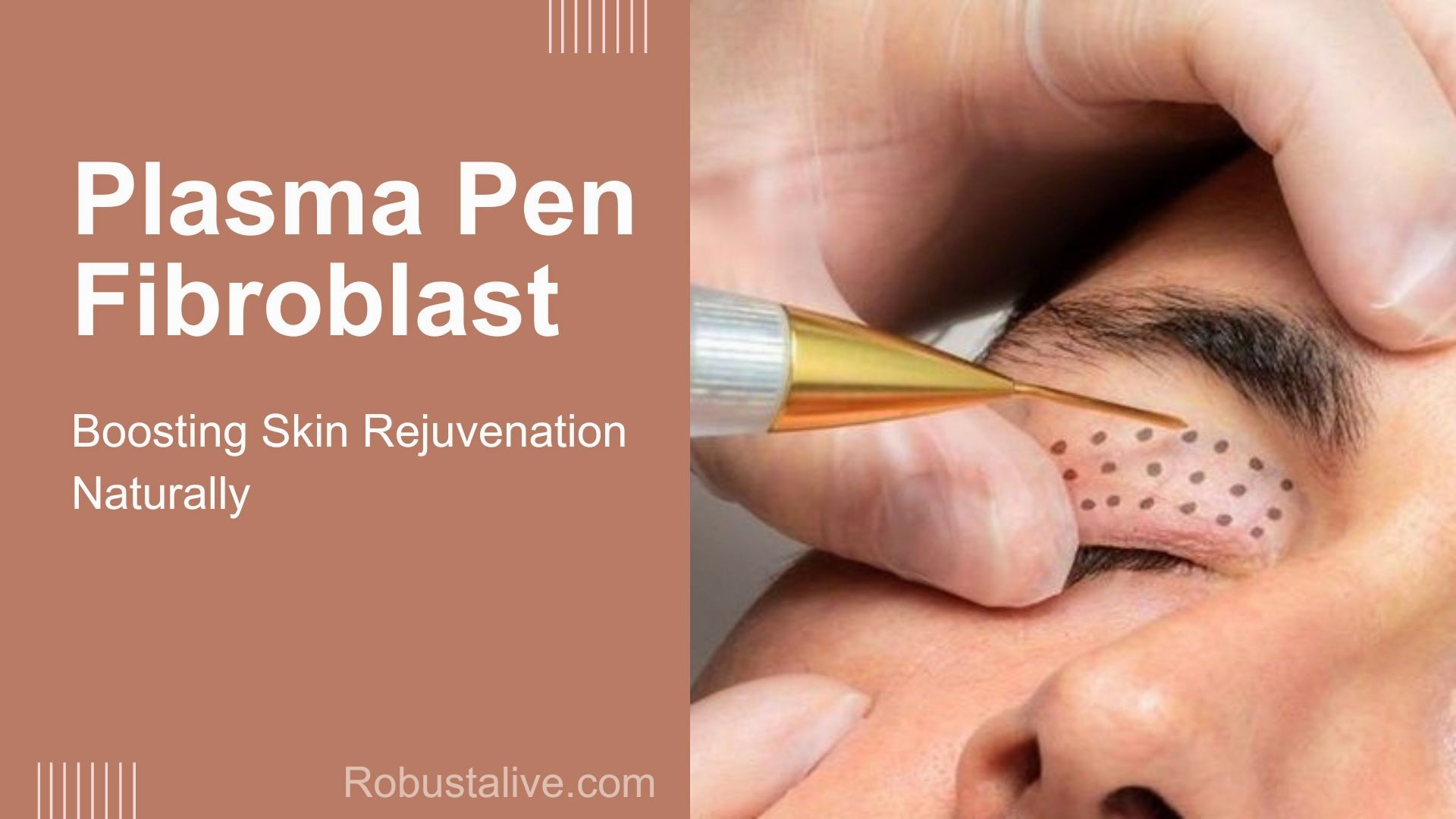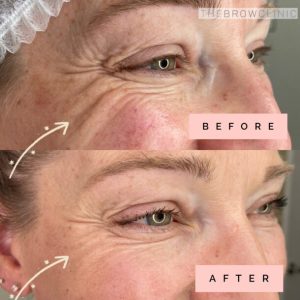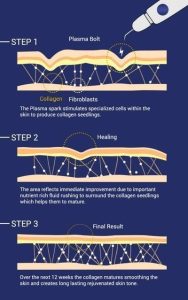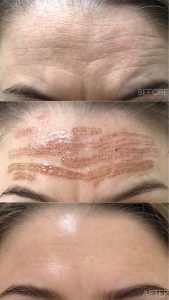Plasma Pen Fibroblast: Boosting Skin Rejuvenation Naturally

Many of us wish for a way to turn back the clock and regain that youthful, radiant complexion. Luckily, there’s a fantastic solution gaining popularity in the world of skincare – the plasma pen fibroblast treatment.
So, what is plasma pen fibroblast all about?
Plasma pen fibroblast tightens skin without surgery, reducing wrinkles and scars. It uses plasma to create tiny skin injuries that stimulate collagen and tighten skin. Results appear in weeks, lasting 2-3 years. Fair-medium skin and suitable skin types are important for the treatment.
This article will examine what this plasma pen fibroblast technique is all about.
What Is Plasma Pen Fibroblast?
Plasma pen fibroblast is an innovative aesthetic treatment that utilizes the power of plasma, the fourth state of matter. This cutting-edge procedure aims to tighten and improve the appearance of the skin, providing an alternative to traditional laser treatments, injections, or surgical options.
It’s a relatively new technique in facial and cosmetic treatments that offers remarkable results without invasive methods. It is also known as plasma pen treatment.
Plasma pen fibroblast specifically targets fibroblasts, essential cells found in the dermis, the layer of skin just beneath the outermost layer. These fibroblasts produce collagen and proteins crucial for skin healing, firmness, and tightness.
The Advantages Of Plasma Pen Fibroblast Are:
- Realistic surgical-like results
- Gentle and non-invasive
- Minimal recovery time
- Quick and Affordable

Source: The Brow Clinic
What Are The Benefits Of Plasma Pen Fibroblast?
It effectively addresses a variety of skin conditions, such as:
- Tackle acne scars and sun damage
- Smooth out seborrheic keratosis
- Reduce wrinkles and sagging
- Non-surgical eyelid lift
- Under-eye bag solution
- Firm up jowls and neck
- Enhance your nose’s appearance
- Smooth out forehead and facial lines
- Lift sagging brows
- Natural-looking fuller lips
- Tighten stomach skin
Does Plasma Pen Fibroblast Really Work?
According to a 2014 article, its effects are expected to stimulate fibroblast production up to 1 year after treatment. There needs to be more research due to its newness.
A small 2007 study on eight participants showed promising results, with a 37 percent reduction in facial wrinkling—also a 68 percent overall improvement in facial appearance after receiving full-face treatments every 3 weeks.
How Does It Work?
The procedure employs a pen-like device that emits a high-frequency electric current. Importantly, this plasma tip doesn’t directly touch the skin’s surface but releases a focused current above it.
This high-temperature current creates tiny holes in the skin’s layer or micro-injuries.

Source : Pinterest
The effects of plasma fibroblast therapy are multi-faceted:
- Protein Breakdown: It breaks down proteins in the skin, paving the way for rejuvenation.
- Tissue Regeneration: The therapy encourages the regeneration of skin tissue, promoting a more youthful appearance.
- Stimulated Fibroblasts: Fibroblast activity is stimulated, contributing to increased collagen production.
- Tissue Contraction: The procedure causes the skin to contract, resulting in a noticeable tightening effect.
Healthcare providers may refer to this approach as “plasma skin resurfacing.
What’s The Procedure Like?
The procedure typically involves several steps to achieve its effects in a safe and controlled manner:
Step1:
The skin is cleansed, and a topical anesthetic (numbing) cream is applied to ensure comfort during the treatment. After about 30 minutes, the numbing cream takes effect.
Step 2:
The designated skin area is treated with the plasma pen. The pen creates small arcs of microcurrents that generate tiny scab-like dots on the skin.

Source: www.youareface.com
Step 4:
After the treatment, the numbing cream is removed, and a cooling gel may be applied to minimize any tingling or burning sensations.
The entire procedure usually takes around 30 to 60 minutes to complete.
Is Plasma Pen Fibroblast Procedure Painful?
The plasma pen fibroblast procedure might feel like a slight pinching sensation on your skin. It’s usually very mild and not painful for most patients.

Source: cosmetictattooingmelbourne.com.au
Healing And Results After Plasma Pen Fibroblast
How Soon Can I See Results After The Treatment?
You’ll notice results immediately after the treatment, but the best results typically show after 3 to 4 weeks when the skin heals and collagen grows.
How Long Does It Take For Skin To Heal?
The skin healing process usually takes around 12 weeks to see the final results. You might notice small changes day by day, but the more noticeable improvements will gradually add up over time. It’s possible to keep seeing better skin for up to 6 months as the healing cycle completes.
How Many Sessions Are Usually l Needed For The Best Results?
The number of sessions depends on your skin’s condition and desired outcome. Usually, 2 sessions are recommended, each 6 to 8 weeks apart.
How Long Does The Effects Of Plasma Pen Fibroblast Last?
The impact of plasma pen fibroblast treatment varies, usually lasting 2-3 years based on skin type, procedure precision, healing quality, and overall health. To extend results beyond 3 years:
- Precision Matters: Accurate procedure enhances durability.
- Less Tissue Damage: Skillful execution minimizes damage for better outcomes.
- Healing Care: Follow post-treatment guidelines for optimal healing and lasting effects.
While Fibroblast effects are permanent, daily aging continues. Results persist for years, but muscle-strong mimic lines might reappear sooner (2-4 years).
Are There Any Side Effects?
Indeed, here are the potential side effects of plasma pen fibroblast therapy which include:
- Redness
- Swelling
- Light spots (Hypopigmentation)
- Dark spots (Hyperpigmentation)
- Skin peeling and crusting
- Legal Restrictions: Only some places allow this treatment. For example, Canada doesn’t allow it for cosmetic purposes. This is because risks might be associated, and the safety of the devices and practitioners needs to be thoroughly checked.
Can I Do Plasma Pen Fibroblast Therapy At Home?
I strongly recommend against attempting Plasma pen fibroblast therapy at home.
There are websites selling plasma pens, but doing it without proper medical supervision can harm your face. Always put your skin’s safety first!
A licensed and trained professional should only perform this treatment in a controlled and sterile environment.
Trying it at home could lead to severe risks and complications. Consult a qualified practitioner for such procedures.
Am I A Suitable Candidate for Plasma Pen Fibroblast?
Here are the things to consider:
- Good Health: You should be in good health with no pre-existing health conditions.
- Skin Type: Ideal candidates have fair to medium skin tones with loose, crepe-like skin around areas like the eyes, neck, tummy, or mouth.
- Avoid If: Don’t consider it if you’re prone to keloid scars, have diabetes, healing disorders, lymphatic draining issues, or a history of hyperpigmentation. Also, it’s not for those with pacemakers, pregnant, or breastfeeding.
- Skin Tone: It’s recommended for FitzPatrick Scale types 1-3 and sometimes 4/5. If you’re type 3/4/5, you might be prone to temporary hyperpigmentation, so a patch test is wise.

Source: www.youareface.com
- Dark Complexions Beware: Darker complexions (type 6) have a higher risk of hyperpigmentation, so be cautious. A patch test is a good idea for everyone to check for potential issues with hyperpigmentation or texture.
Pre And Post-Care For Plasma Pen Fibroblast Treatment
Pre-Treatment Care:
- Avoid sun exposure and use SPF to protect your skin before the treatment to prevent complications.
- Ensure you have no active infections in the treatment area before the procedure.
- Avoid other cosmetic treatments or procedures in the treatment area at least a month before fibroblast.

Source: www.mentalfloss.com
Post-Treatment Care:
- Adhere to the aftercare instructions provided by the professional to promote proper healing.
- Refrain from touching, picking, or scratching the treated area to prevent infection or irritation.
- Expect mild swelling and redness; apply cold compresses as recommended to ease discomfort.
- The moisturizer the professional recommends keeps the skin hydrated and aids healing.
- Avoid using makeup on the treated area until it’s fully healed to prevent infection.
- Continue using SPF and limit sun exposure to protect your healing skin from UV rays.
- Skip hot baths, saunas, and steam rooms for a few days after the treatment.
- Refrain from intense workouts that cause excessive sweating for a few days to prevent irritation.
- Attend scheduled follow-up appointments to monitor your healing progress and discuss concerns.

Source: frenchradiance.com
How Much Does Plasma Pen Fibroblast Cost?
The cost of plasma fibroblast therapy varies depending on the treatment area and the provider. For instance, treating the undereye region might cost around $600, while addressing upper or lower lip areas could be around $720.
In Scottsdale, Arizona, treating forehead lines might cost about $500, and treating crow’s feet could be around $400.
It’s a good idea to ask your healthcare provider about the number of treatments needed for results and whether the fee covers all expenses, including numbing creams.
FAQs
What Can Go Wrong With Plasma Pen Fibroblast?
Plasma Fibroblast treatment risks include skin punctures, deep burns, eye and facial damage, scarring, pigmentation changes, and potential allergic reactions when devices are misused or intense treatment. Side effects can worsen with increased sessions and intensity.
Is Plasma Pen Fibroblast Safe?
The plasma pen fibroblast treatment is generally considered safe, especially compared to more invasive cosmetic procedures. However, like any cosmetic treatment, there are potential risks, such as swelling and bruising.
Is Plasma Pen Fibroblast Better Than Botox?
Plasma fibroblast typically provides longer-lasting results than Botox, with effects lasting up to 3 years, as opposed to a few months with Botox. However, the choice between the two depends on individual preferences and desired outcomes.
Conclusion
In summary, plasma pen fibroblast shows promise as a non-invasive skin tightening solution, although more research is needed.
If considering this treatment, consult a healthcare provider for its suitability and expected outcomes. Your safety should always come first!





